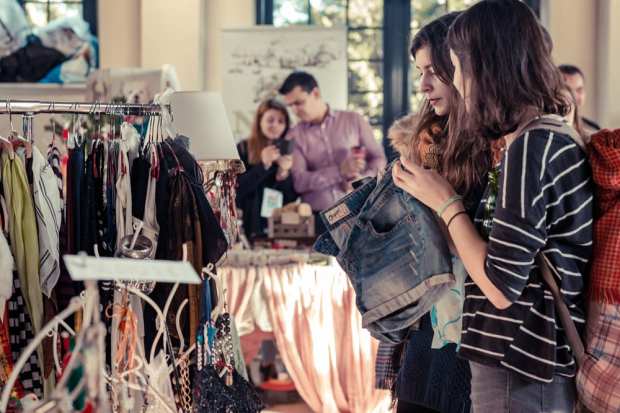Post-Pandemic Era Ushers In reCommerce Boom

The outbreak of an unprecedented global health pandemic hit the world of retail like a meteor, flattening everything in its immediate path, and more gradually choking out the rest with the cloud of dust kicked up by its impact – in this case, a cloud measured in the thousands of shuttered shops that were barred from accepting customers for roughly three months.
But as is the case with epoch-making events, there have been some players and sub-segments that have not only survived the pandemic period, but have surprisingly risen to thrive, as rapidly digitizing customer preferences have driven them to explore new commerce modes.
According to recent reports, one of those unexpected areas has turned out to be the reCommerce market, as secondhand sales have boomed – even in segments like apparel, where they have otherwise come grinding to a near halt.
According to CNBC reports, secondhand apparel marketplace ThredUP is having a big year, and looking toward an even bigger half-decade ahead. According to its annual report, the resale marketplace is currently worth roughly $28 billion and is projected to reach $64 billion by 2025.
“Resale is here to stay,” said ThredUP Co-founder and CEO James Reinhart. “The next question is who wins and who loses.”
According to ThredUP’s report, the resale market grew 25 times faster than the overall retail market in 2019. Some experts have worried that the pandemic would prompt consumers to pull back on purchasing their goods secondhand, for fear of running into the virus as an unwanted free gift – but the data is telling another tale, said Reinhart.
“The constant news cycle around how the virus is transmitted has educated consumers. It does not get transmitted on apparel,” he said. “When this started, we were all worried about take-out food. Now that is safe. Consumers are smart about this stuff.”
Smart, and increasingly interested in shopping in the “world’s largest thrift shop,” as ThredUP bills itself – either directly through its own portal or via its partnerships with major retail players like Macy’s, Walmart and The Gap.
Per the report, secondhand goods are expected to make up 17% of a person’s share of closet space by 2029, up from just 3% in 2009. That would put it behind only merchandise bought from off-price outlets such as TJ Maxx, at 19%. Department stores’ share of a closet is expected to be at 7% in 2029, down from 22% two decades earlier.
According to ThredUP’s recently released data, secondhand goods are projected to take up roughly 17 percent of the customer’s closet space, compared to just 3 percent in 2009. In comparison, clothing purchased from off-price outlets holds about 19 percent of closet share. The portion purchased in department stores is projected to continue its decline to reach 7 percent in 2029, having dropped like a rock from 22 percent in 2009.
“Department stores acknowledge they will lose share unless they capture the magic mojo … and what else is going on in apparel,” Reinhart said. “The department store is looking at us to help in some small way.”
And while ThredUP has ridden out the pandemic in style and increased its customer base, fashion is far from the only reCommerce segment that has seen a big pickup pushed at least partly by the pandemic and rapid digitization of consumers’ habits. In a conversation with liquidation platform B-Stock CEO Howard Rosenberg, he noted that the ice age that has recently hit the retail world has created mass inventory build-ups among retailers across the board – apparel, electronics, home goods – and pushed them toward a variety of liquidation strategies to keep the wheels of commerce rolling. That has led them to use reCommerce platforms to move their goods, or working with firms like B-Stock to find overstock buyers.
“In some cases, we’ve seen clients coming in and saying, ‘Hey, we have all this inventory. Can you guys help us liquidate it directly out of the stores instead of bringing it back to a distribution center the way we normally do it?’” Rosenberg said. “One of our clients that fits that bill this month has increased its inventory shipment to us by 700 percent.”
And while the current market pressures have intensified consumer interest in eCommerce, they didn’t create them. Consumers’ habits around acquiring things, such as household items and apparel, had already been modifying for over a decade. That includes buying high-quality goods secondhand – or even joining up with a communal closet like the Rent the Runway, where clothing can be bought, but is more likely to be kept temporarily and shipped back in exchange for new pieces.
“Our goal is to convert 50 percent to 80 percent of every woman’s closet to rented instead of bought. What we really want is to allow millions and millions of women, who aren’t part of the platform today, to have a program that is right for them,” Rent the Runway COO Anushka Salinas told PYMNTS last fall.
The consumer’s closet is changing. The concepts of “new” and “mine” are perhaps shifting to become secondary considerations for consumers when it comes to accessing the goods they want at a more manageable price point – particularly now, as many are facing joblessness and looking for ways to spend their money more efficiently.
That doesn’t mean we can forecast that reCommerce and retail access subscription services will be a permanent part of the landscape forever – but it does indicate that for the time being, we can expect to see more of them.
